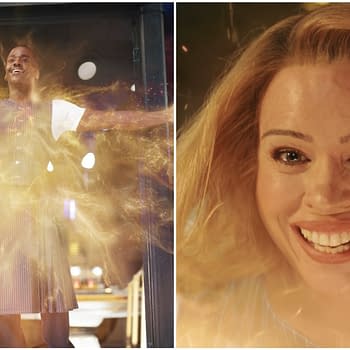Posted in: 20th Century Studios, Hulu, Movies | Tagged: bdsm, clive barker, hellraiser, horror, hulu, Splatterpunk, streaming
Hellraiser Without Sex or Desire is Just Another Slasher Movie
There's a new Hellraiser movie, a reboot of the franchise after countless terrible straight-to-video sequels. It probably has a bigger budget than the last four sequels put together. But is it a good Hellraiser story, though?

The new Hellraiser features a young addict who falls off the wagon and accidentally solves the lament configuration puzzle box that unleashes the Cenobites who stalk her and her friends until she can somehow undo her mistake and send them back to hell, but not before most of her friends are picked off and eviscerated. It's an effective slasher movie, slicker than any of the last films in the franchise, the suspense coming from being chased by Cenobites. The only thematic layer missing from this story is the lack of sex and desire. The original Hellraiser from 1987 was about sexual obsession and BDSM, partly inspired by author and director Clive Barker's experiences at fetish and BDSM clubs.
What Gave Hellraiser its Edge was the AIDS Crisis and Sexual Anxiety
The unspoken subtext that drove Hellraiser back when it premiered was desire during the AIDS crisis. When little was still known about HIV beyond how deadly it was, Sex and the exchange of bodily fluids was considered a death sentence, and teenagers and twentysomethings lived with that like the sexual version of fearing nuclear war. That was how Splatterpunk became the Horror New Wave, concurrently with Cyberpunk being the new wave for Science Fiction in the 1980s. Hellraiser was the ultimate expression of the fear of sex and bodily fluids in movies, given how many body parts are eviscerated and how much blood is spattered in the movies. AIDS was what gave Hellraiser and the Cenobites real bite. It was about the desire for pain and pleasure to the point of bodily destruction and how that might be transcendental without Sex and Desire in the mix.
You might have thought the plot of the new Hellraiser might be about addicts so desperate for a high that they actively seek to solve the lament configuration in search of the rush. Instead, it's about the collateral damage that addicts wreck on their friends and loved ones. Any other monster could have sufficed for this story. The main character causes the death of her friends and loved ones because of her mistake, and the story becomes another monster slasher movie. Hollywood continues to be squeamish about Sex but has no problem with gore and bloody giblets splattering across the screen.
Is the Cenobites' Safe Word "Hellraiser"?
At least the Cenobites remain exactly what they were, a BDSM cult from Hell who don't care about consent. They don't wear black leather anymore but instead have their skins peeled and pulled out as their clothing. But what they stand for is silo'd off from the rest of the story. The Cenobites are about transcendence through transgression, and that transgression is Pain. What drives them is sex and desire, which are absent from the story and the characters. Addiction feels like a central metaphor that's been superficially grafted onto the central premise of Hellraiser. In previous sequels, the Cenobites were often used as a deus ex machina, showing up to punish the guilty with a kind of Catholic morality. In this new movie, the Cenobites are just the monsters in a slasher movie, stalking the cast, who aren't even being punished for having sex but just being at the wrong place at the wrong time.
Remembering the Original Hellraiser
There hasn't been a proper exploration of how much Sex and Desire play a part in the premise of Hellraiser since the first two movies. The first movie was a mostly faithful adaptation of Barker's story from The Books of Blood, "The Hellbound Heart," but changed the central characters into members of the same family instead of a couple and their friends.
You could say the Cenobites represent addiction to pain, but addiction is a compulsion more than desire. Addiction is about craving a high to numb feelings and emotions. In contrast, the Cenobites are about forcing people to feel pain until they achieve epiphany, but they mostly just die. The only character in the new Hellraiser movie who wanted to experience a new high – again, addiction more than desire – is the evil rich guy who might achieve transcendence at the end and become a brand-new Cenobite if there's a sequel. But the sexlessness of it all makes it feel like this is a watered-down Hellraiser.
Hellraiser is streaming exclusively on Hulu.














